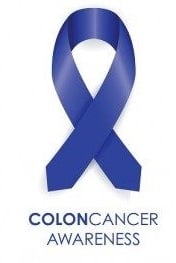Worldwide, colorectal cancer (CRC) is the third most commonly occurring cancer in men and the second most commonly occurring cancer in women. There were over 1.8 million new cases in 2018. The global number of new CRC cases is predicted to reach 3.2 million in 2040, based on projections of aging, population growth, and human development.

That said, the typically slow course of growth from precancerous polyp to invasive cancer to advanced-stage disease provides a unique opportunity for the prevention and early detection of CRC. Screening can prevent cancer through the detection and removal of precancerous growths and detect the disease at an early stage, when treatment is usually more successful. As a result, screening reduces CRC mortality both by decreasing incidence and increasing survival.
‘Modifiable risk factors’
Genetic risk factors do play a role in CRC, but modifiable risk factors play an even bigger one. For example, the risk of colon cancer in people who are sedentary is 25% to 50% greater than among those who are physically active. (Physical activity may reduce the risk of CRC by inhibition of fat accumulation, inflammation suppression, and improving gut motility and metabolic hormones.) Overweight and obesity are also established CRC risk factors. The risk of colon cancer and rectal cancer in obese men is 50 and 25% higher than in normal-weight men. Whereas the risk of colon cancer is only increased by 10% in obese women, with no increase in the risk of rectal cancer.
Diet can influence the risk of CRC directly through dietary elements, or indirectly through gut microbiome or body weight gain. High consumption of processed foods, red meats and refined carbohydrates, and low-calcium diets facilitate inflammatory response and increase the risk of CRC.
Early detection
CRC almost always begins as a polyp, which is a noncancerous growth that develops in the mucosal layer (inner lining) of the colon or rectum. Polyps are common, detected in about half of average-risk individuals 50 years of age or older undergoing colonoscopy, with higher prevalence in older age groups and among men compared to women. However, fewer than 10% of polyps are estimated to progress to invasive cancer, a process that usually occurs slowly over 10 to 20 years and is more likely as polyps increase in size. Cancer cells typically spread first into nearby lymph nodes. They can also be carried via blood vessels to other organs and tissues, such as the liver or lungs, or be shed directly into the peritoneum (membrane lining the abdomen).
The most important predictor of CRC survival is stage at diagnosis, which speaks to the importance of screening and early detection. The five-year survival rate is 90% for the 39% of patients diagnosed with localized-stage disease, but declines to 71% and 14% for those diagnosed with regional and distant stages, respectively. Rectal cancer is diagnosed at a localized stage slightly more often than colon cancer, 41% versus 38%, likely due to the earlier appearance of symptoms and partly explaining the higher overall 5-year relative survival (67% versus 63%).
A two-step screening strategy is commonly used in clinical practice. Highly sensitive, non-invasive stool-based tests detect molecular markers and blood, and visual examinations allow the clinician to observe the colon and rectum directly. If the test is positive, invasive endoscopic methods, such as colonoscopy, CT colonography, and sigmoidoscopy, are performed to further confirm the abnormal results.
Since 1980, the American Cancer Society has issued evidence-based recommendations for CRC screening in average-risk adults. Its 2018 guidelines recommend that adults ages 45 years and older undergo regular screening with a high-sensitivity stool-based test or visual examination, depending on patient preference and test availability. All positive results on non-colonoscopy screening tests should be followed up with a timely colonoscopy.
The impact of COVID-19
There is mounting evidence that the COVID-19 pandemic has had negative effects on CRC care. A study spanning the National Health Service in England between January 2019 and October 2020 showed that in 2020, there was a 63% reduction in monthly referrals for suspected cancer compared with 2019, a 92% reduction in colonoscopies, and a 31% relative reduction in patients receiving surgery.
On the other hand, researchers at Virginia Commonwealth University reported in October 2021 on a survey suggesting that people who were reluctant – because of the pandemic -- to go to a hospital or outpatient center for a colonoscopy turned instead to home-administered fecal occult blood tests. About 30 percent more survey respondents completed the home-based test during the pandemic than before it.
Equity
Colorectal cancer mortality has decreased considerably following the adoption of national screening programs, yet, among at-risk subgroups, there continue to be measurable differences in clinical outcomes from variations in screening, receipt of chemotherapy, radiation or surgery, access to clinical trials, research participation, and survivorship. Disparities identified have included race and ethnicity, age (specifically young adults), socioeconomic status, insurance access, geography, and environmental exposures.
The OSOM® iFOB Test
The OSOM® iFOB Test from SEKISUI Diagnostics is a rapid qualitative test for the immunochemical detection of fecal occult blood/human hemoglobin (hHb) in human fecal specimens as an aid in the diagnosis of gastrointestinal disorders such as diverticulitis, colitis, polyps, and colorectal cancer. The test yields accurate results in 5-10 minutes with less than 1 minute of hands-on time, with no dietary or drug restrictions.



Share Article